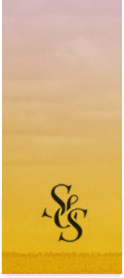
Diamond Mouth Surprise, the “monthly night of writing music film pictures talking chanting dancing loving communing,” was held last Saturday in its usual high ceiling-ed apartment space in Williamsburg. One of four performances (which included Noah Wall sound-sculpting crystal glass frequencies, photos below), was the debut projection of Bill Gillim’s new Megafortress release (out 1/31 on Software) with a Grant Nitsch-made video for each song. The internet saw “Green Child” last week (via Pitchfork) and now “My Favorite Girl” today (via Dummy). The rest should arrive soon, and when it does, we recommend a full, start to finish viewing—it’s a gorgeous and cohesive series, and also quite expansive given the ingredients Grant limited himself to. My curiosity into his process grew throughout that show, and while the Kansas City native wasn’t present to ask, he was just an email away:
Your visual aesthetic and the Megafortress sound are very much intertwined now. How did you start working with Bill?
GN: I made this video a little over a year ago for my good friend Adam Tramposh/Polymer Slug for a song off his release on the Digitalis label. Bill saw it online and contacted me out of the blue asking if I’d make him a video for “Freedom from Fear.” I listened to his music and immediately said yes. I don’t think either of us make explicit the concepts behind our work (at least not to each other), but I think we share a specific kind of respect and love for the process and the world that the work inhabits/is inspired by. We’ll definitely collaborate on future projects.
It’s impressive and commendable that all this footage is your own. How long have you been collecting it, and where was it shot?
GN: I’ve had this mini DV handycam that my Dad gave me about 12 years ago, and I’ve been shooting and compiling images on those little tapes and on hard drives since. The footage is from anywhere in my life over the past several years, which means, aside from a brief trip overseas, most was shot in the Midwest. I don’t always have the camera with me, but if you’ve known me personally in the past few years, chances are there’s a small piece of an experience we shared, glimpsed and preserved by a mini DV tape, that made its way into a recent work.
I did shoot quite a bit specifically for the Megafortress videos. But the foundations of most compositions come from those years of collecting footage at the lake home where I grew up, in the woods, on the road and in and around my Kansas City apartment.
There’s a lot going on in these pieces—textures, debris, colors, liquids, lighting, dust—can you clue us in a bit on what’s involved in their layers and how you make them do what they do?
GN: The layering is mostly driven by Bill’s music. Yeah, there’s a lot going on, and sometimes I get in over my head with it. At one point in “Consolamentum” I convinced myself that it was necessary to have 16 different layers of dust, condensation, reflections, flashes of light, plants, and landscape footage playing at once and drifting in and out (my laptop could barely handle it). But getting them to do what they do isn’t as much a technical trick as it is just a lot of time spent deciding where and how each layer exists in the mix.
All those things (texture, debris, dust …) just happen to be what I’ve been interested in documenting over the years. But choices in shooting and layering also have a lot to do with the limits of the camera. It can’t capture most things the way I want, and I’ve had to get to know it really well in order to produce anything that’s not telltale handycam footage. Being forced to discover its strengths has lead me to some really unexpected visuals, and sometimes the layering is just another part of pushing what the camera will give me.




